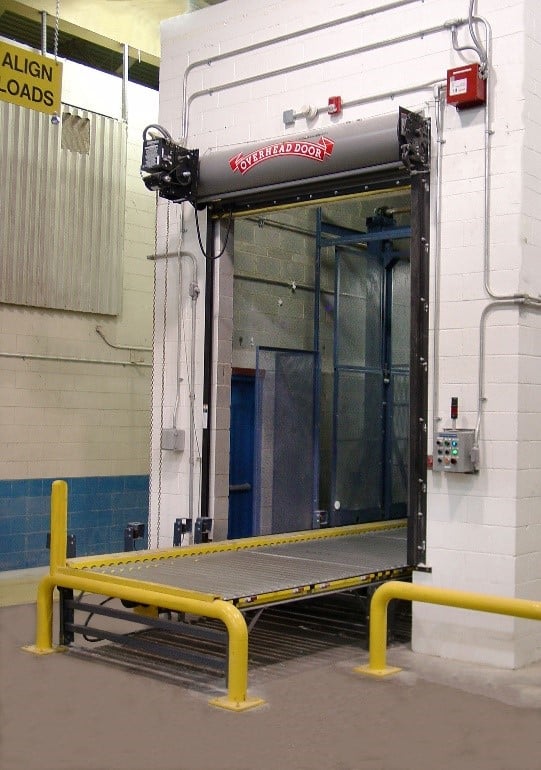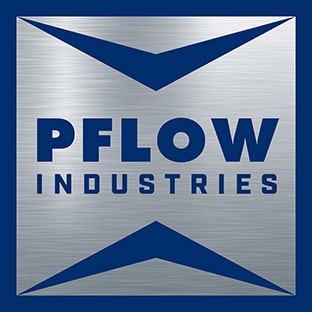Are you considering installing a new elevator or replacing an existing elevator for use in moving materials in your facility? Now is a great time to consider installing a vertical reciprocating converyor (VRC) instead of an elevator.
7 Reasons to Consider Installing a VRC Versus an Elevator
If you need a safe, efficient, and cost-effective way to move materials to two or more floor levels (including mezzanines, balconies, or pick modules), it is time to consider a VRC.
Why should you install a VRC versus an elevator?

1. Overall Cost Savings
As freight and other conventional elevators move people in addition to materials, they must meet stringent code requirements as defined by ASME A17.1 to ensure the safety of the people riding within the elevator. Because VRCs are designed for moving materials and not people, they must comply with code requirements and safety standards for conveyors and related equipment as defined by ASME code B20.1 which has fewer requirements for safety redundancies than people-moving elevators. Because of this, the overall cost of ownership of a VRC is far less than that of a people-moving elevator. Read more about the difference between elevators and VRCs here.
2. Ability to Move Large, Bulky, Heavy, or Odd-Shaped Loads
VRCs are designed to lift and lower materials of all weights, sizes, and shapes to two or more floor levels, and can accommodate loads weighing between 10 lbs and over 100,000 lbs. VRCs are also a safer way to lift materials versus forklift or scissor lift, as they feature an enclosed carriage structure that prevents materials from falling as they are lifted and lowered.
3. Nearly Limitless Installation / Placement Options
Because VRCs do not move people, they can be installed in spaces or areas where people-moving elevators cannot, allowing you to bypass pinch points or free up valuable floor space. VRCs can be installed indoors or outdoors, in existing elevator shafts, next to balconies and mezzanines, in through-floor applications and more, in new or existing facilities.
4. Flexibility in Loading / Unloading Patterns
You can significantly improve efficiency and safety by installing lifting equipment that allows material to be loaded and unloaded from different or multiple directions. VRCs can be designed to accommodate the following load/unload patterns:
- C Pattern: load and unload from the front of the carriage
- Z Pattern: load and unload on opposite sides of the carriage
- 90° Pattern: load from the front and unload from the side of the carriage
5. Ability to Integrate with Automated Conveyor Systems, AGVs and AMRs
Unlike elevators, VRCs can be easily integrated as part of a fully-automated material handling system. VRC manufacturers like PFlow Industries can design automated systems that incorporate horizontal conveyors and VRCs for a streamlined workflow. VRCs can even be paired with autonomous vehicles (AGVs, AMRs, and driverless forklifts).
6. Ability to be Used Indoors or Outdoors
If the floor level you need to reach is only accessible from outdoors or your interior footprint does not have space for a VRC – not a problem! VRCs can be installed where conventional elevators cannot – even outdoors. Whether at job sites, dockyards, or on the exterior of an existing building, the sky's the limit when it comes to outdoor applications for VRCs. PFlow Industries even offers a galvanized finish that will stand up to the toughest of outdoor environments.
7. Ability to Move Materials in Specialized Environments
If you’re looking to raise or lower materials in specialized environments like clean rooms or food processing plants, or in classified environments that require explosion-proof components, then it’s time to talk to a dedicated VRC manufacturer like PFlow industries. With experience building customized equipment for a wide range of industries, we can deliver VRCs engineered for your specialized material handling requirements.
PFlow Industries - Your VRC Solutions Partner
If you’re looking to upgrade or expand your materials handling capacity, remove bottlenecks in your workflow, or simply replace a legacy elevator with a material lifting solution better suited to your operation, PFlow has a VRC solution to meet your needs.
PFlow Industries pioneered the VRC concept in the late 1970s and has been dedicated to VRC safety and innovation ever since. Over 20,000 PFlow VRCs are in use worldwide across a wide array of industries.
Click below to learn more about how PFlow’s VRC solutions can help raise your business to the next level.
